It is human nature to compete, we cannot help ourselves, this human need to push the boundaries of the accepted norm or establish a benchmark of performance has accelerated the development of every single thing we manufacture, invent and innovate.
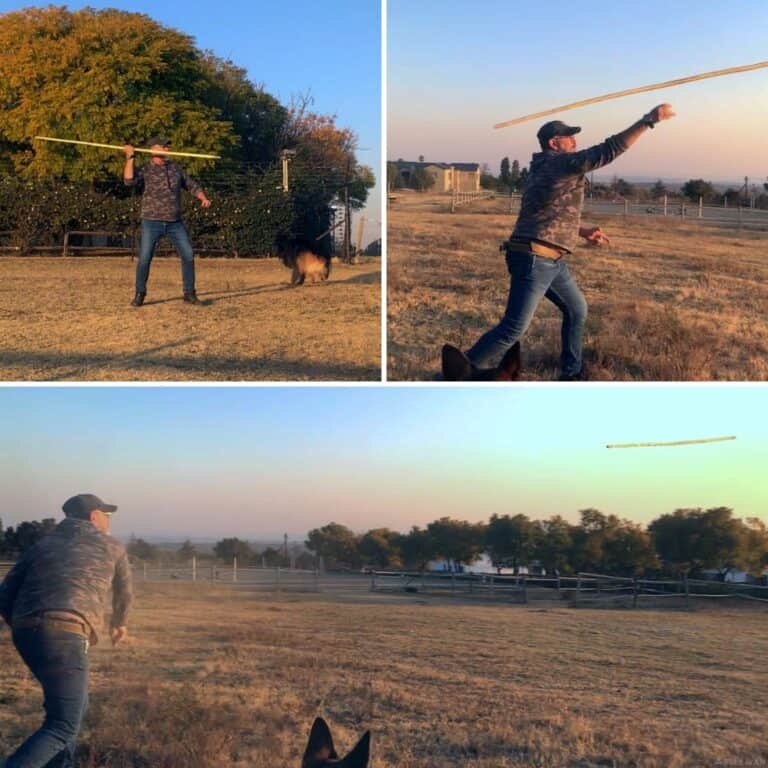
Making the spear is the easiest of all the primitive weapons, in a survival situation it is a game changer. Picking up a long stick and sharpening it is the easiest way to fashion a survival weapon, and it’s free.
It is, however, not just the spear itself that enables us to push ourselves to greater and greater feats of athleticism, it is the way the spear is handled and thrown.
In this article, I will take you step-by-step through the body dynamics of throwing the spear. How to achieve balance and consistent accuracy with the spear, to increase your strike rate.
These are the game changers in any survival situation which will give you the advantage in a hostile environment.
A Really Short History of the Spear
The spear has played an integral part in human history from the beginning of time and really came into its own during the stone age.
Cave paintings and pictographs of men hunting mammoths with stone-tipped spears can be found as early as 4000 years ago.
Archaeologists suspect that the stone-tipped spear is older, and has served mankind much longer. The earliest rock art depicting the spear is around 44,000 years old.
The introduction of metal saw a dramatic change in how spears were made and finished with a corresponding rise in performance.
Egyptians, Greeks, Africans, Romans, Persians, Indians, and Chinese – all developed a variety of spears but utilized the same technique or very similar throwing techniques to send their spears down range.
The Law of Hand-Eye Coordination
As a general rule, the eyes guide the hands in the execution of tasks. This is especially applicable to core tasks, tasks requiring accuracy, and tasks that take multiple the compiling of multiple stimuli and factors in order to achieve a defined result.
The eyes provide the initial information which allows the brain to calculate the variables to achieve the goal.
This sounds pretty complex (and it is), but it is a testament to the brain’s ability to compute multiple factors and perform accurate functions.
An example is operating a door handle, a simple task that we take for granted as an everyday occurrence, yet it is a complex action that takes many factors into account.
These would be the door handles height in relation to the door, it would be your height in relation to the door, and the actual movement of the door handle.
Does the door handle turn or pull down, does it rotate left or right, does the door itself open outwards or inwards, and how much strength is required to twist or pull the door handle?
The distance that your hand has to travel to reach its target, which is the door handle.
Most of our daily actions are taken for granted. We do them or complete them “naturally,” instinctively, this is muscle memory and built-up time through repartition and constant use.
These factors and vectors become even more complex when throwing or shooting at a specific point on a target. This is the nature of the practice. Hand-eye coordination is a degradable skill, which means that without constant use and practice your accuracy or proficiency will diminish.

Technique
Balance is vital for accuracy. Balance your body and balance the spear in your throwing hand.
1. Before you throw the spear, find the midpoint of the spear, where, when held in an open palm the weight is evenly distributed between either end of the spear. This is the sweet spot. Mark it off.
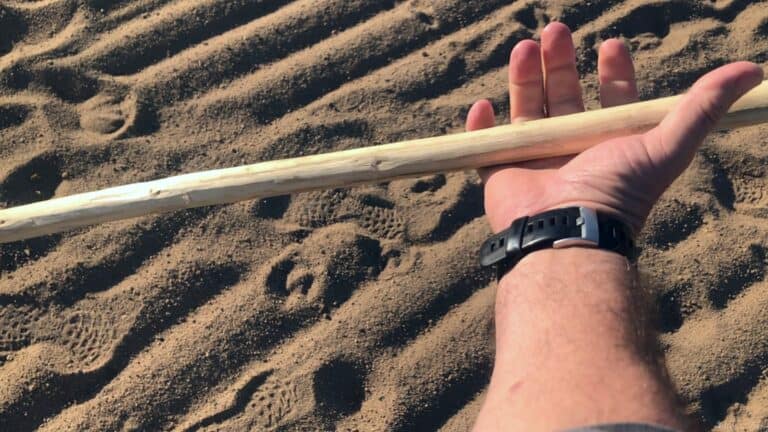
2. Wrap the sweet spot in leather or cord to give you a more secure grip. Feel the weighted balance in your hand, your grip must remain consistent for every throw.
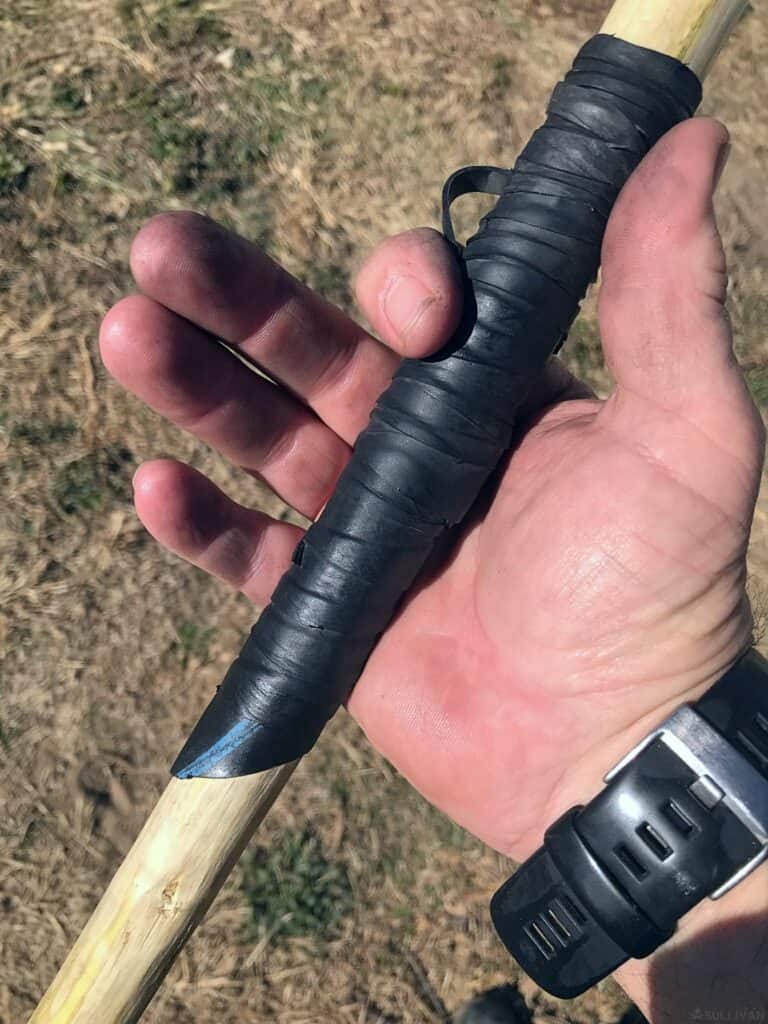
3. With the spear gripped firmly in your dominant hand, take a step forward with your non-dominant foot.
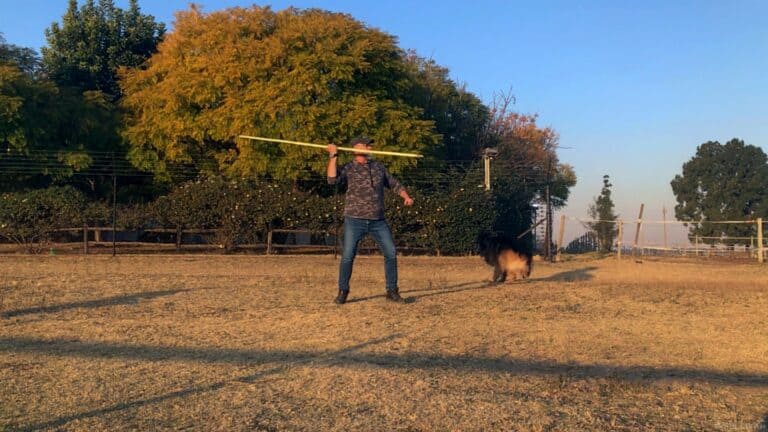
4. Draw your spear back, your arm will be as far back behind you as possible, your non-dominant hand pointing at the target.
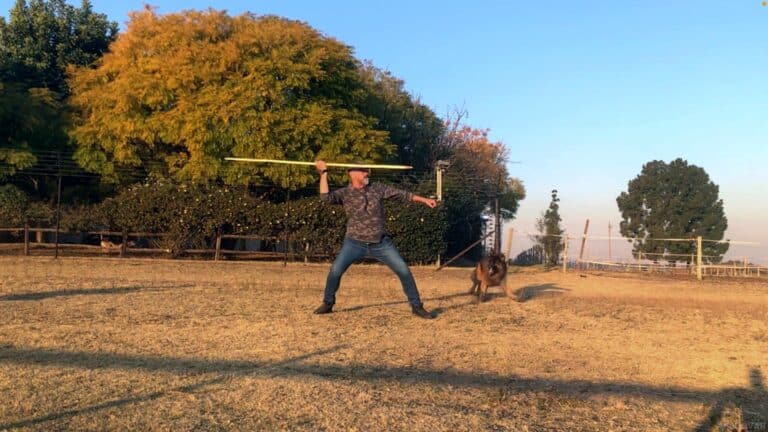
5. From this position throw your spear by bringing your spear hand over your shoulder and releasing the spear just before you are in line with the target.
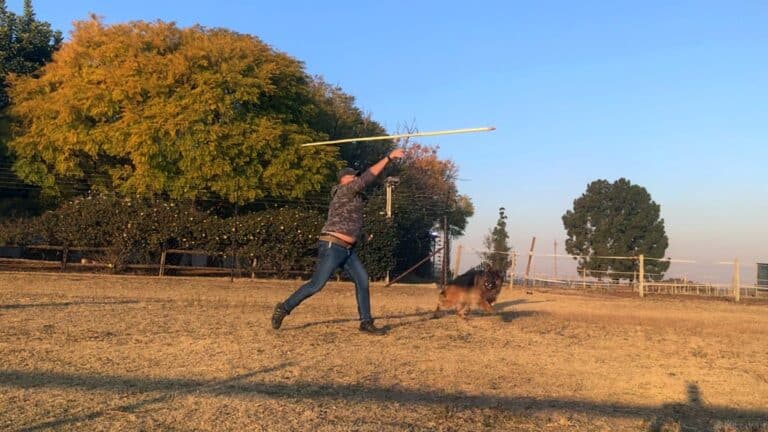
6. Continue forward with the throw once you have released the spear, this is called the follow through.
7. Maintain eye contact with the travel of the spear. The more consistent you are with this technique the more accurate you will be. The law of hand-eye coordination will keep your throw on target.
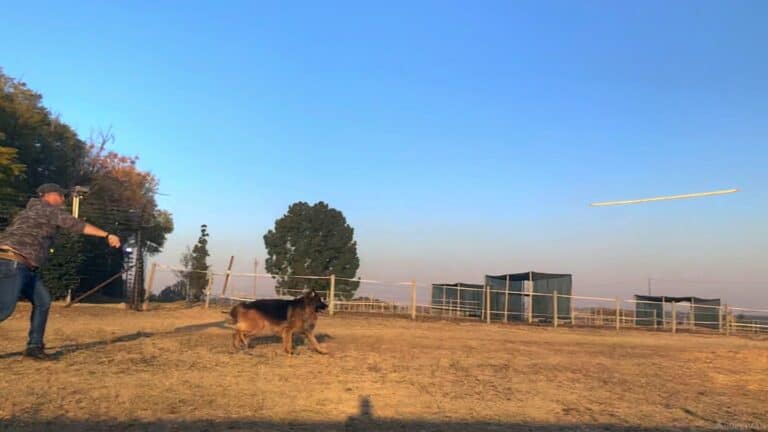
8. To give your spear more momentum you can take a run-up or add a skip step (which I prefer) and then launch the spear. The run-up or skip generates more kinetic energy, so more distance.
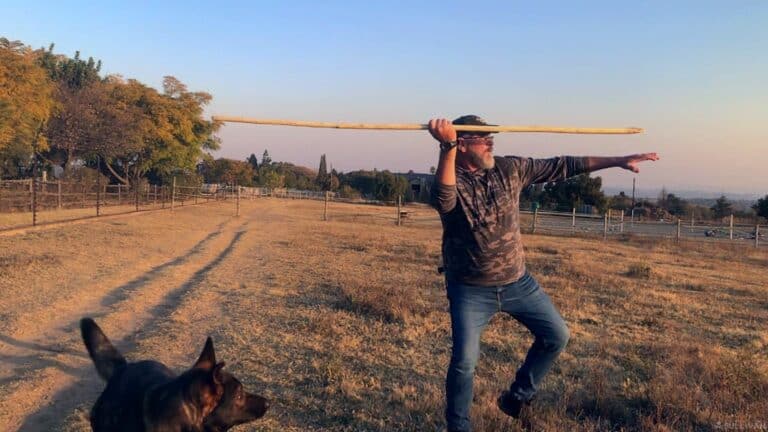
9. Extend your lead leg until your foot is grounded ahead of you, and at the same time, draw back your throwing arm to its full extension.

10. Now, transfer all your forward momentum into the hip rotation, and bring your spear hand over your shoulder at the same time to launch the spear.
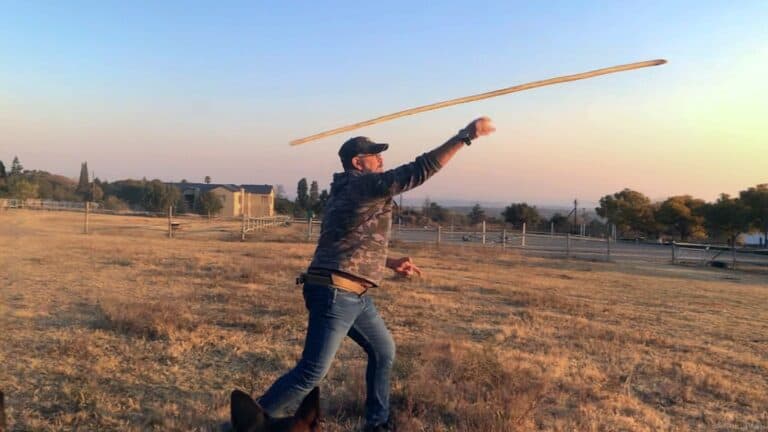
11. Follow through as with any other throw. This will keep your spear on target.

Take your time to find the balance between how your body works with the added weight. Practice throwing your spear in an open area that is clear of people and animals. The spear is a deadly weapon and can inflict fatal injuries.
Practice till the muscles in your arm develop and the muscle memory to throw your spear becomes instinctive.
Think Olympic javelin throwers can reach distances of up to 300 feet, primitive spears are capable of 10 to 20 percent of that.
The Last Throw
Spears are one of the most basic primitive weapons to use and require very little effort to throw. The throw, when executed correctly and with consistency, will be accurate.
Follow the steps as outlined, and your body will adapt and do the rest. Let yourself follow the target, don’t focus on your spear.
Practice and practice some more to achieve muscle memory and consistency.
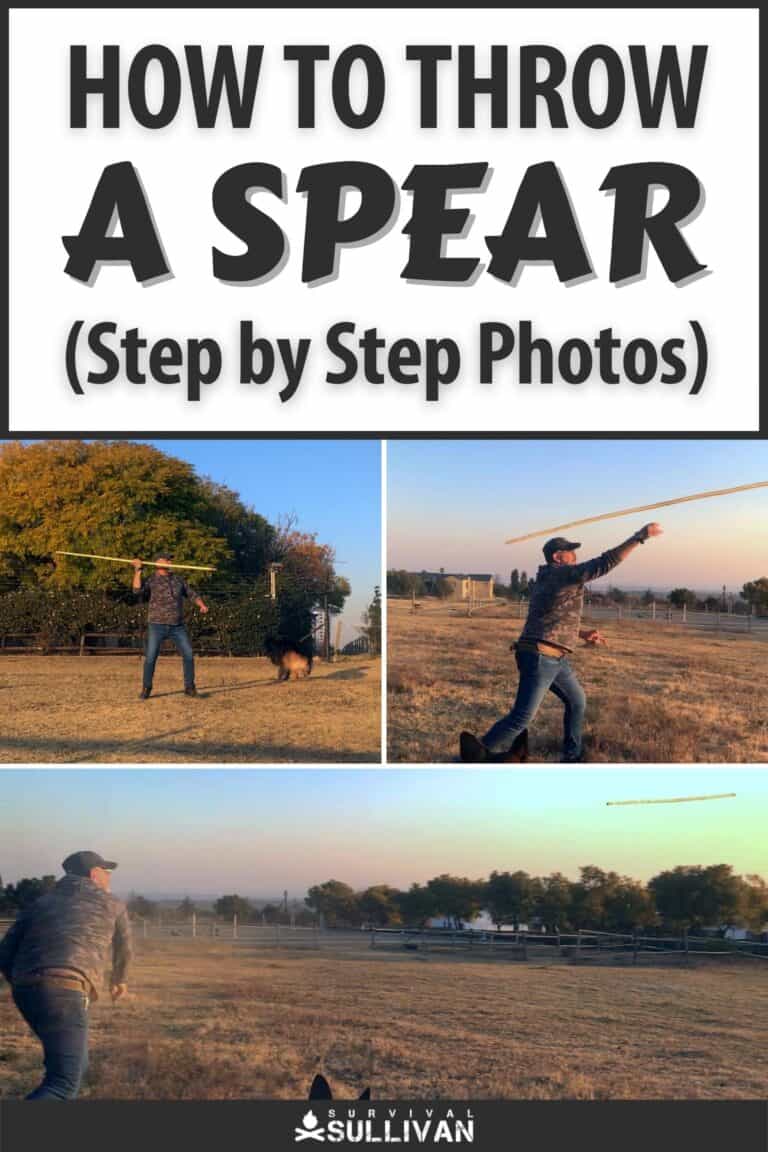
The post How To Throw a Spear Like a Pro (Step by Step Photos) appeared first on Survival Sullivan.
By: Harrison Caine
Title: How To Throw a Spear Like a Pro (Step by Step Photos)
Sourced From: www.survivalsullivan.com/how-to-throw-a-spear/
Published Date: Tue, 27 Sep 2022 16:00:00 +0000
-------------------------------------------------------------------------
 CampingSurvivalistHuntingFishingExploringHikingPrivacy PolicyTerms And Conditions
CampingSurvivalistHuntingFishingExploringHikingPrivacy PolicyTerms And Conditions
